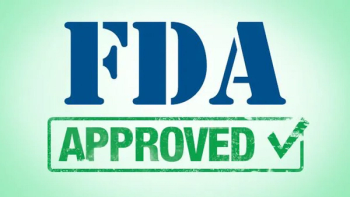
- September 2013
- Volume 7
- Issue 6
Chemotherapy Residue on the Checkout Desk?
Occupational exposure to hazardous drugs is a known risk of working in settings in which these drugs are administered.
Oncology Nursing Consultant, Adjunct Assistant Professor of NursingLouisiana State Health Sciences Center in New Orleans, Louisiana
Occupational exposure to hazardous drugs is a known risk of working in settings in which these drugs are administered. While we often immediately think about exposure of staff who prepare and administer hazardous drugs, other people who may inadvertently be exposed to hazardous drugs are housekeeping and clerical staff, patients’ family members, and visitors. So how does this happen? How is it possible that the mail carrier can come in contact with hazardous drugs?
The answer is hazardous drug residue. A 2010 study identified locations in oncology settings that have the highest likelihood of residue, and they include work surfaces within biological safety cabinets (BSCs) and compounding aseptic containment isolators, their airfoils and vents, and on the floor directly below them.1 In addition, other locations at risk for hazardous drug residue are countertops where these drugs are placed or stored, door handles, refrigerator shelves, infusion chairs, infusion pump keypads, and hazardous waste containers.
In June 2012, a National Institute for Occupational Safety and Health (NIOSH) team reported its findings of a health hazard evaluation of an outpatient oncology clinic employing 54 people.2 The team collected surface wipe samples to detect chemotherapy residue. Platinum was detected in 18 of 26 surface wipe samples (69%) on the first of two visits to the clinic, and the highest level (91 ng/100 cm2) was collected in the clinic’s pharmacy on the floor in front of the class 2 BSC.
Platinum was detected in 16 of 20 surface wipe samples (80%) during the second visit to the clinic 14 months later. This time, the highest surface wipe levels of platinum were found on the middle of the BSC work area and on the countertop next to the sink in the treatment room. Surface wipe samples detected cyclophosphamide in the clinic pharmacy (on the floor in front of the BSC, and on the floor beneath the counter where prepared drugs were placed), and treatment room floor (eg, on the floor underneath an IV pole), which suggested inadequate work practices and housekeeping.
Cyclophosphamide also was found in the checkout desk area, an area that should not have had chemotherapy contamination. One sample location remained positive for all three days of visit two, which suggested that cyclophosphamide was not being effectively removed after one or two cleanings of the area. Of note, the team also inspected the BSC and found that it operated properly and was certified annually. However, the employees in this clinic reported inconsistent use of personal protective equipment (PPE) (eg, four employees reported not consistently double-gloving or using chemotherapy-protective gowns when administering chemotherapy).
Exposure to hazardous drugs can occur via inhalation, oral ingestion from hand-mouth contact, skin contact, and injection (needlestick injury). Strategies to reduce potential exposure include transporting chemotherapy in plastic bins to reduce contact with other surfaces, such as countertops, and cleaning the bins after each use. The BSC sash height should be high enough to ensure at least 100 feet per minute of airflow. Policies and procedures should be reviewed with staff, and additional training provided when indicated. If not already in place, a medical surveillance program for staff handling hazardous drugs should be implemented (information can be found on the NIOSH website at www.cdc.gov/NIOSH).
The BSC needs to be cleaned with a deactivating agent and disinfecting agent at the beginning and end of each shift/day, before and after each activity, and after a spill, should one occur. Cleaning with an oxidizing agent, such as sodium hypochlorite solution, is recommended. Because of its corrosive nature on work surfaces, following with a sodium thiosulfate solution after cleaning can help neutralize its effects. A final cleaning with a residue-free disinfecting agent, such as sterile 70% isopropyl alcohol, is recommended. Staff who prepare and administer chemotherapy should use PPE.
Work surfaces should be sampled periodically for chemotherapy drugs. Companies that perform hazardous drug sampling testing include ALS (DataChem): www .datachem.com; Bureau Veritas: www.bureauveritas.com; ChemoGlo: www.chemoglo.com, and RJ Lee Group, Inc: www.rjlg.com.
Although NIOSH does not have occupational exposure limits defined for surface levels of chemotherapy drugs, periodic sampling identifies presence of chemotherapy in areas in which it should not be present, and allows comparisons over time that may be used to evaluate employee work practices, administrative controls, and housekeeping.
Surface testing for chemotherapy residue may seem unnecessary; however, as one clinic found, it helped identify residue in unexpected places—including the elevator buttons down the hall.
References
- Connor TH, DeBord DG, Pretty JR, et al. Evaluation of antineoplastic drug exposure of health care workers at three university-based US cancer centers. J Occup Environ Med. 2010;52(10):1019-1027.
- Couch J, West C. Chemotherapy drug exposures at an oncology clinic—Florida. Health hazard evaluation report, National Institute for Occupational Safety and Health. June 2012. Retrieved from http://www.cdc.gov/niosh/hhe/reports/ pdfs/2009-0148-3158.pdf. Accessed September 10, 2013.
Articles in this issue
about 12 years ago
Merging Community Practices With an Academic Cancer Centerabout 12 years ago
Redefining Palliative Careabout 12 years ago
Matching Ostomy Pouching Systems to Patient NeedNewsletter
Knowledge is power. Don’t miss the most recent breakthroughs in cancer care.
















































































